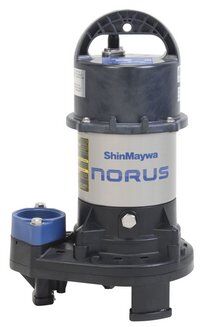Why Checking Your Submersible Pond Pump Oil Matters
As spring approaches in Upstate New York and you begin preparing your pond for the warmer months, it’s important to remember the health of your pond’s equipment. One important task that should not be overlooked is checking the oil levels in your submersible pond pump. For those using direct drive pumps, this is particularly important. Unlike magnetic drive pumps, which don’t require oil, direct drive pumps rely on non-toxic turbine oil to keep the internal components lubricated and functioning efficiently. Neglecting to check the oil levels can lead to overheating, which could damage the pump’s bearings and, ultimately, shorten its lifespan.
The Role of Turbine Oil in Your Pond Pump
 Direct drive submersible pond pumps contain a drive shaft assembly that requires lubrication to operate smoothly. Turbine oil is used to keep the moving parts in good condition by minimizing friction and preventing wear and tear. Over time, the oil may evaporate or become diluted with water, which can hinder the pump’s performance. If the oil level is too low or the oil has turned milky, the pump will likely overheat, leading to serious damage and potentially costly repairs or replacements.
Direct drive submersible pond pumps contain a drive shaft assembly that requires lubrication to operate smoothly. Turbine oil is used to keep the moving parts in good condition by minimizing friction and preventing wear and tear. Over time, the oil may evaporate or become diluted with water, which can hinder the pump’s performance. If the oil level is too low or the oil has turned milky, the pump will likely overheat, leading to serious damage and potentially costly repairs or replacements.
By checking and maintaining the proper oil levels in your pump, you can extend the life of your equipment and avoid costly repairs or replacements. After all, turbine oil is a small expense compared to buying a brand-new pump!
How to Check the Oil Level in Your Submersible Pond Pump
To ensure your pump stays in optimal condition, here’s a simple step-by-step guide to checking the oil levels:
- Remove the Pump: Begin by disconnecting the pump from the skimmer box or outflow pipe. It’s important to ensure that the pump is completely removed from the water to prevent any potential water from contaminating the oil.
- Locate the Oil Fill Port: Once the pump is dry and removed, locate the oil fill port. This will typically be a small opening sealed with either a Philips head screw or a hex head machine screw.
- Check the Oil Level: With the screw removed, examine the oil level inside the pump. Ideally, the oil should be three-quarters full. If the level is low, you may need to add more oil. It’s also important to check the color of the oil. It should be clear and translucent. If it appears cloudy or milky, this could indicate water contamination, which means it’s time to change the oil.
- Reassemble the Pump: After inspecting the oil, carefully replace the screw and washer. Be sure not to overtighten the screw, as this could damage the washer and lead to future leaks. Tighten it just enough to secure the oil chamber.
Signs That Your Pond Pump May Need Attention
In addition to regular oil checks, there are other signs that may indicate your submersible pond pump requires attention. If you notice that your pump is making unusual noises, not operating at full power, or if your pond water is not circulating as efficiently as it should be, it might be a sign that something is wrong with the pump’s internal components. Regular oil checks can help prevent these issues from occurring, but it’s also important to stay vigilant about other potential problems.
Need Help? We’re Here to Assist You
Maintaining your submersible pond pump doesn’t have to be a daunting task. If you’re unsure about how to check the oil or have any other questions regarding your pond pump, don’t hesitate to reach out to us. We’re happy to provide guidance and ensure your pond equipment is ready for the spring season. You can text or call us, and we’ll be happy to help you with any pond pump concerns!





